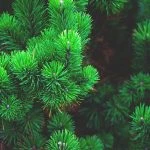Nature\'s Own Conifer Trees
Picture yourself in a tranquil forest, where the air is crisp, and a sense of calm envelops your soul. In this idyllic setting, conifer trees stand tall, their evergreen foliage dancing gently in the breeze. Conifer trees, also known as evergreens, are a remarkable gift from nature. With their distinctive characteristics and unique adaptations, these majestic trees have captivated humans for centuries. In this article, we will explore the enchanting world of conifer trees, delving into their various types, remarkable features, and the perfect weather that allows them to thrive.
The World of Conifer Trees:
Conifer trees are a group of woody plants characterized by their cone-bearing reproductive structures and needle-like or scale-like leaves. Among the most prominent conifers are pine, spruce, fir, cedar, and cypress. Each species possesses its own unique traits and thrives in specific habitats, showcasing the diversity and resilience of these incredible trees.
Remarkable Features of Conifer Trees:
One of the most striking characteristics of conifer trees is their evergreen nature. Unlike deciduous trees that shed their leaves, conifers retain their greenery throughout the year, symbolizing resilience and everlasting beauty. This trait has ecological significance as well, as conifers provide year-round shelter and food sources for wildlife, ensuring the sustainability of many ecosystems.
Conifer trees are known for their needle-like leaves, which are key adaptations for their survival. These leaves reduce water loss, prevent snow accumulation, and deter herbivores. The diversity of coniferous needles is truly remarkable, with various shapes, lengths, and colors adding to their aesthetic appeal and lending a sense of uniqueness to each species.
Another remarkable feature of conifers is their cone-bearing reproductive structures. Cones play a vital role in the reproduction of conifer trees, and their life cycle is truly fascinating. From the development of male and female cones to the dispersal of seeds through wind, animals, or even fire, conifers have evolved remarkable mechanisms to ensure their survival and colonization of new areas.
Perfect Weather for Conifer Trees:
To thrive, conifer trees require specific weather conditions. Temperature and climate play crucial roles in their growth and vitality. Different species have preferred temperature ranges, and variations in climate, humidity, rainfall, and elevation can influence their distribution. Some conifers thrive in colder climates, showcasing their winter hardiness and ability to withstand snow, ice, and freezing temperatures. Others display resilience in hot and dry conditions, utilizing efficient water usage and tolerance to sunlight.
Environmental factors such as soil preferences and sunlight exposure also impact the health and growth of conifer trees. While they can adapt to various soil types, certain species have specific soil requirements for optimal growth. Additionally, conifers exhibit the ability to thrive in both sunny and shaded environments, highlighting their adaptability to different light levels.
Conclusion:
As we immerse ourselves in the world of conifers, we discover a timeless connection to nature—a reminder of the resilience and grace that abounds in the perfect weather. The evergreen nature, remarkable adaptations, and importance to ecosystems make conifer trees a true marvel of nature.
Let us embrace and appreciate their beauty, whether by exploring forests, planting our own, or simply pausing to admire their grandeur. In the presence of conifers, we find solace, inspiration, and a deep appreciation for the wonders of the natural world.





